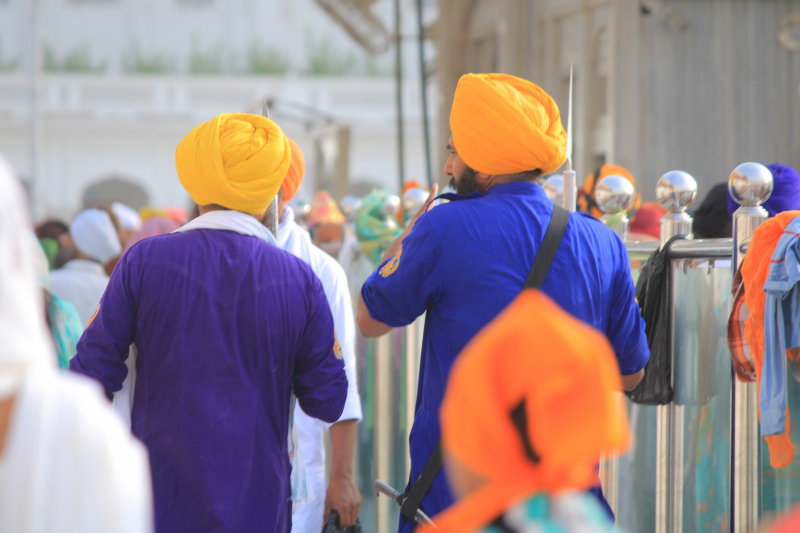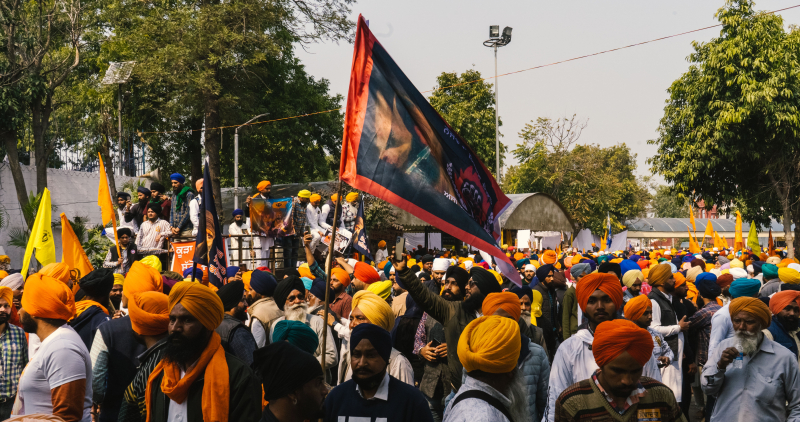Turbans are an important part of the Sikh identity.
Guru Gobind Singh, the tenth and last living Sikh Guru, gathered his disciples in the Punjab town of Anandpur in 1699; nearly 80,000 attended. Guru Gobind Singh, according to legend, stood in front of his people, brandished a naked sword, and demanded a head. He called again and again, until five Sikhs volunteered. These five people come from various locations in India and from various castes.
Guru Gobind Singh conferred a new discipline, a creed, on these five, and later on many others, on that momentous day. The Guru introduced these five into the new Khalsa order, and they, in turn, initiated him in a dramatic and momentous gesture. On that day, he bestowed upon the Sikhs a distinct identity comprised of five articles of faith:
- Unshorn hair is regarded as a gift from God and Guru, as well as a symbol of Sikh identity.
- A hair comb of a small size
- A steel bracelet that represents a reality with no beginning and no end, as well as a Sikh's dedication to the values of his faith, in the same way that a wedding ring may express fidelity and identity,
- A sword symbolic of resolve and commitment to justice
- Knee-length breeches in keeping with a Sikh's disciplined way of life
Turbans are an essential component of Sikh identity. Turbans are worn by both men and women. Sikhs see their turbans, like their articles of faith, as gifts given by their adored gurus, and their meaning is extremely personal. Wearing a turban typically shows one's social position in South Asian culture; turbans were previously worn by kings and rulers. The turban was embraced by Sikh gurus in part to remind Sikhs that they are all sovereign, royal, and ultimately equal.
Sikh men use turbans to conceal their long hair, while smaller boys wear their uncut hair in a topknot covered by a piece of fabric. Meanwhile, Sikh women cover their hair with a long scarf called a dupatta or chunni, or they can choose to wear turbans. Wearing a turban expresses a Sikh's public commitment to upholding the tradition's principles and ethics, such as service, compassion, and honesty.
Along with the physical markers stated above, Guru Gobind Singh went a step further in differentiating Sikhs. In Indian society, a person's name shows his or her caste and social rank. Guru Gobind Singh liberated Sikhs from the rigid caste system by requiring all Sikh males to take the surname "Singh," which means "lion," and all Sikh females to take the surname "Kaur," which means "princess," abandoning their caste status.
Every year, Sikhs around the world commemorate and celebrate the historic events of Vaisakhi 1699, when Guru Gobind Singh decreed the foundation of the Khalsa and shaped the nation of Sikhs.











